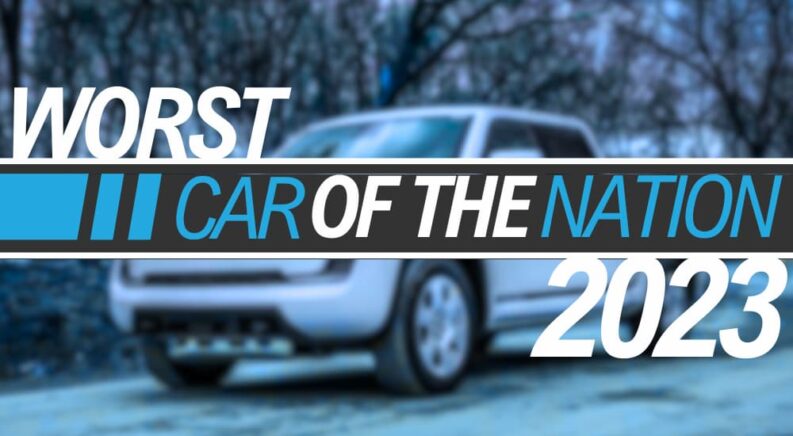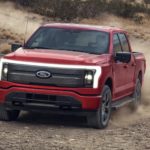As we look back on all the models offered in 2023, there have been dozens of vehicles that have pushed boundaries, offering drivers incredible performance, unbelievable luxury, and unmatched value. Then there are the vehicles that were a complete flop. Some had underwhelming specifications, some were priced too high for what they offered, and some were just plain boring or unattractive. But only one was so bad that it actually drove the company that built it into bankruptcy. Enter the 2023 Lordstown Endurance.
A Fresh Startup With Revolutionary Technology
The sorry saga of the Lordstown Endurance began in 2007 when a Mr. Steve Burns founded AMP Electric Vehicles with the mission of bringing electric vehicles to public roads. Those were the early days of electrification when the Prius was still a revolutionary concept, and the name Tesla still brought to mind a Serbian engineer rather than a global automotive empire. Burns had the ingenious idea that if he could design an electric powertrain, he could convince an established automotive manufacturer to build the chassis for him. This isn’t too far off what Tesla (the company, not the engineer) did when it contracted Lotus to build the body for the original Roadster. That deal nearly killed Tesla, but AMP Electric Vehicles couldn’t even find anyone interested in working with them.
After five years with nothing to show for it, Burns might have been better off calling everything off, but instead, an opportunity appeared. The remarkable thing about the history of the Lordstown Endurance is just how many unlikely opportunities allowed the project to reach its final, disastrous conclusion, each one digging the hole just a little deeper before the eventual collapse. The first opportunity was the decision by Navistar to sell off Workhorse Custom Chassis, a manufacturer of commercial vehicles. Suddenly, AMP Electric Vehicles had the resources it needed even without convincing an established manufacturer to partner with it.
The deal went through in 2013, and AMP Electric Vehicles (which rebranded as the Workhorse Group in 2015) began designing a lineup of electric models to be produced at the Workhorse plant in Indiana. Among those vehicles was the Workhorse W-15, a full-size electric pickup designed for commercial buyers. With a 60 kWh battery back supplemented by a three-cylinder gasoline range extender, the W-15 was a truck ahead of its time. Between its reveal in 2017 and when it was planned to enter production in 2018, it attracted over 6,000 pre-orders. So far, so good—Workhorse was a startup success story that anyone could be proud of.
Dark Clouds on the Horizon
Things started going downhill in 2019 when Burns abruptly resigned as CEO of Workhorse Group. Three months later, GM announced that it was in talks to sell its massive 6.2-million-square-foot Lordstown Assembly plant to Workhorse Group. However, the plant actually ended up being sold to a new entity with Burns as CEO. Dubbed Lordstown Motors, the new company was 10% owned by Workhorse Group and licensed the W-15 truck (which Workhorse subsequently canceled) as its initial product. While Workhorse sank into obscurity, punctuated by a series of unfortunate events that included an SEC fraud investigation, a legal battle to try and overturn its lost USPS delivery van contract, and the recall and subsequent cancellation of its flagship C-1000 van, all eyes turned to Lordstown Motors as the future of the American pickup truck.
Burns set out on a propaganda blitz for his new company that painted a rosy picture of the “still warm” assembly line churning out “proven” electric pickup trucks before Rivian and Ford could get their own electric models out the door. Spoiler alert––that didn’t happen. It turns out that converting an idled GM plant that had been closed over labor difficulties to produce electric trucks wasn’t an easy task. Especially when the truck it was supposed to produce didn’t actually exist yet. You see, Burns decided that simply producing the W-15 wasn’t enough. Lordstown Motors would instead produce an entirely different all-electric truck that used none of the technology or parts developed for the W-15.
The new Lordstown Endurance was a fresh design that was built around hub motors. Rather than placing an electric motor in the body of the vehicle like every other EV, Lordstown decided to place a motor in the hub of each wheel. This was touted as “the simplest car ever made” by Burns himself, who claimed that the truck “handles like a sports car,” which seems unlikely given what we would later learn about the vehicle. The first trucks were expected to come off the line in the Summer of 2020, with a planned production of 20,000 units in the first year. It was even claimed that nearly all of the 6,000 pre-orders for the W-15 would convert to the Endurance. Again, none of that happened. None of that even came close to happening.
The Disaster Unfolds
A look back at the press releases and media coverage of the day shows Lordstown in an incredibly positive light. In fact, it is almost suspicious just how much positive press the startup received despite having nothing to show for its many promises. President Trump met with Burns on the White House South Lawn in front of an Endurance prototype in the Fall of 2020 (months after the vehicle was supposed to be in production, although that somehow didn’t come up during the event), and even pop culture icons like Guy Fieri joined in on the Lordstown craze. But good PR doesn’t make a good vehicle.
The dominoes started to fall in March 2021 when a report about Lordstown Motors alleged a history of fraud, overrepresentation of pre-orders, massive production delays, insider stock sales, and a questionable history on the part of Burns himself. One of the most colorful sections of the report was a quote from a previously unreleased police report describing how an Endurance prototype had actually burst into flames just ten minutes into a test drive. The SEC launched an investigation into the fledgling company, and its stock price lost a quarter of its value in three months.
Lordstown responded to the allegations by amending its SEC annual report, and both Burns and his CFO resigned. With a new CEO at the helm and not enough cash to put the Endurance into production, Lordstown Motors sold the Lordstown Assembly to the Taiwanese Foxconn Technology Group in October 2021, with the understanding that Foxconn would handle production of the Endurance while Lordstown Motors focused on design. Foxconn upheld its side of the bargain, and in September of 2022, the Lordstown Endurance limped into production over two years later. With the Rivian R1T, GMC Hummer EV, and Ford F-150 Lighting already in the hands of customers, the long-delayed production of the Lordstown Endurance went largely unnoticed.
A Vehicle So Bad No One Wanted It
Corporate shenanigans, broken promises, and delayed production are no surprise in the dynamic world of startups, and they are usually soon forgotten if the product is good. Unfortunately for Lordstown Motors, the Endurance was not good. Looking at the official Lordstown Motors spec sheet (which has the design aesthetic of a ‘90s sci-fi computer printout), you will find that the Endurance has a maximum payload of 1,050 lbs. That means it can haul 450 lbs less than the Ford Maverick, which is literally just a Ford Escape with a bed on it. In fact, the odds are that if you fill all five seats of the Endurance’s crew cab with construction workers, you’ll exceed its payload limit with an empty bed.
Equally disappointing is the range. We’ve all heard the stories about how the F-150 Lighting is terrible at towing because its 320-mile rated range is cut in half once you hitch a trailer to it. Despite having a sizable 109 kWh battery, the Endurance has about as much range without a trailer as a Lightning with one. That’s right, the EPA gave it a rated range of just 174 miles. The only 2024 models with less range than the Endurance are subcompact city cars like the MINI Cooper SE and Mazda MX-30 with their 30 kWh class batteries. In fact, with an efficiency of 48 MPGe combined, the “revolutionary” hub motor design is somehow less efficient than that monument of excess, the Hummer EV, earning the Endurance the dubious distinction of being the least efficient EV on the market.
After building a truck that can’t haul anything, can’t go anywhere, and burns way too much electricity, what was Lordstown Motors to do? If you answered “end production and declare bankruptcy,” you’d be correct. The line shut down in February after only 19 vehicles had been produced, and in June, Lordstown sued Foxconn before filing for bankruptcy protection. However, the saga might not just be over yet, as, in October, it was announced that Lordstown Motors would be selling its assets to LAS Capital, a shell company owned by none other than our good friend, Steve Burns…




